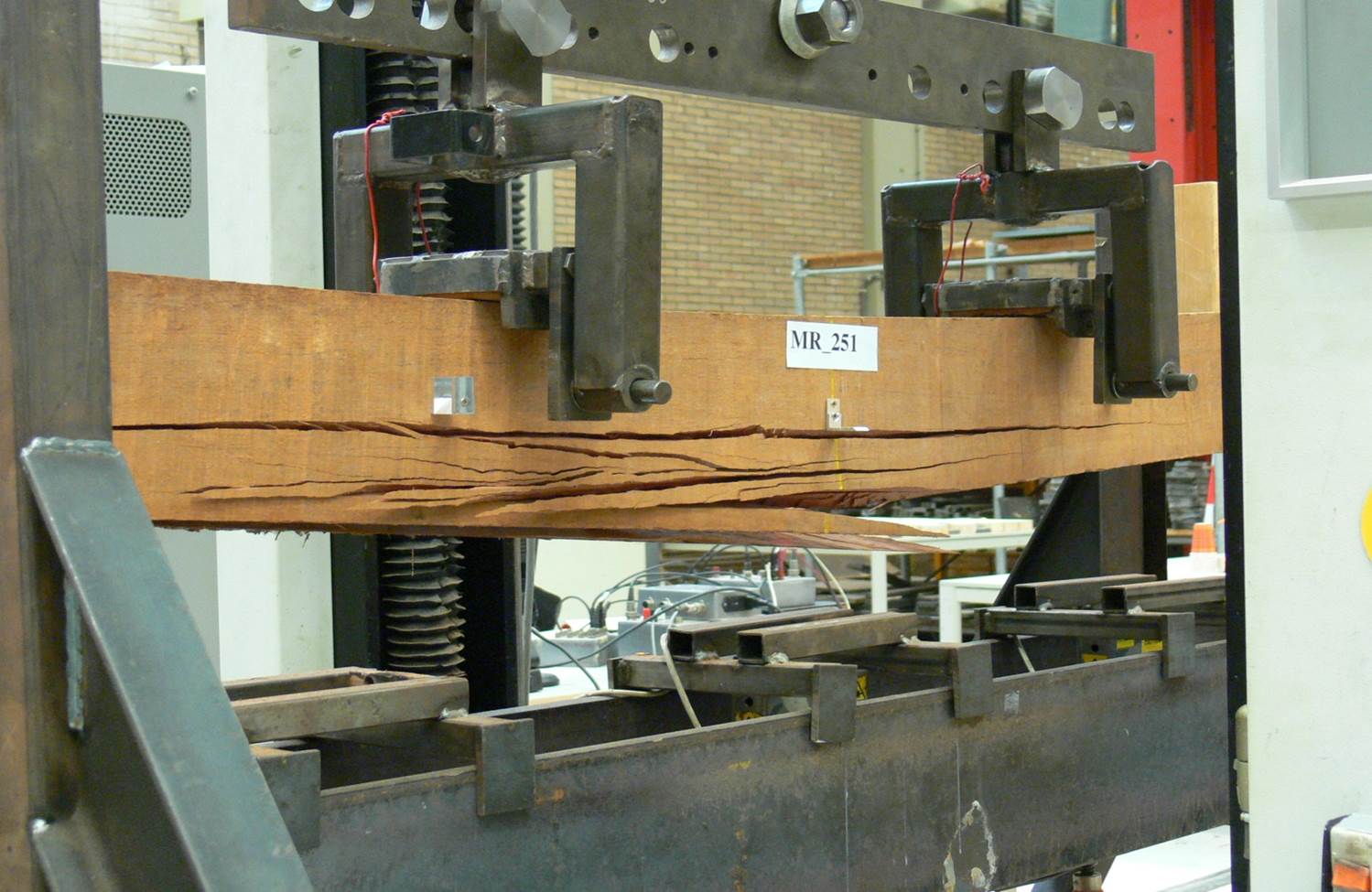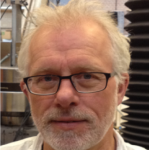Wood properties
Research in wood technology is performed with a strong emphasis on drying technologies and timber selection and grading. For wood drying there is a state-of-the-art drying chamber used to study complex drying schemes for wood species such as poplar, widely used softwoods and (tropical) hardwoods. Advanced drying technologies such as high temperature drying and steam drying lead to significantly higher wood quality with much smaller deformations and discoloration than usual, while at the same time money is saved with reduced energy costs. The drying chamber is used to study the influence of different drying and treatments on the mechanical properties of timber.
As for timber grading, this process is essential in order to be able to use timber as a structural material, because with grading its material properties are determined. By grading, each piece of timber can be assigned to a strength class: to be able to do this, the relationships between grading parameters and strength properties have to be known. By convention, this is done for each species separately: however, by modelling timber independently of the species, but only on measurable characteristics, both the reliability and the economic process of testing is improved. This allows for a safe use of specifically tropical hardwoods, that is coming on the market from sustainable managed forests. Hence, species independent strength grading of structural timber is continuously involved in the research activities of our group.
The grading process of timber is studied not only with traditional visual methods and destructive testing, but also with different technologies such as X-ray and stress waves. The increase in yield in high strength classes is studied for both softwoods and hardwoods, and similar work is performed for tropical hardwoods used in road- and waterworks applications.

Timber grading is also conducted on roundwood for structural applications. Currently, no strength classes are available for roundwood and research work is underway to find out the best grading criteria in relation to the strength, in order to be able to build interesting structures, such as the roundwood watchtower in the natural reserve Holmers-Halkenbroek (Drenthe), winner of the Houtinnovatieprijs 2006 (download paper).
Other technological research is performed into the effects of physical behaviour (moisture and UV-light, etc.): the microstructure and the chemical components are degrading and these phenomena are investigated using several different microscopical methods.
Contact




